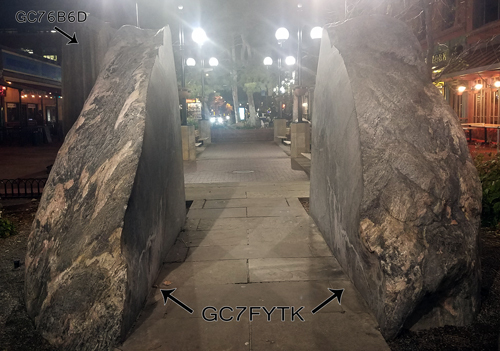Rocks are not all the same. The three main types, or classes, of rock are sedimentary, metamorphic, and igneous, and the differences among them have to do with how they are formed.
Sedimentary rocks are formed from particles of sand, shells, pebbles, and other fragments of material. Together, all these particles are called sediment. Gradually, the sediment accumulates in layers and over a long period of time hardens into rock. Generally, sedimentary rock is fairly soft and may break apart or crumble easily. You can often see sand, pebbles, or stones in the rock, and it is usually the only type that contains fossils.
Metamorphic rocks are formed under the surface of the earth from the metamorphosis (change) that occurs due to intense heat and pressure (squeezing). The rocks that result from these processes often have ribbon-like layers and may have shiny crystals, formed by minerals growing slowly over time, on their surface.
Igneous rocks are formed when magma (molten rock deep within the earth) cools and hardens. Sometimes the magma cools inside the earth, and other times it erupts onto the surface from volcanoes (in this case, it is called lava). When lava cools very quickly, no crystals form and the rock looks shiny and glass-like. Sometimes gas bubbles are trapped in the rock during the cooling process, leaving tiny holes and spaces in the rock.

After finding the Earthcache VERY NEARBY called, 'What's that tall rock on Pearl St. all about?', I thought it would be fun to make a companion called, 'What are those short rocks on Pearl St. all about?'. The rocks are very different from each other, and each have their own history and geology lesson. Make sure you don't mix the answers up.
Technically these rocks are just halves of one bigger boulder. Before splitting, these rocks were originally the greater portion of the third rock located 100 feet to the west at 11th St. Each of these halves weigh about 15 tons, and were cut using a diamond bit quarry wire saw. The original boulder was found outside of Fairplay, Colorado.
Now for your assignment to log this cache... as always, do NOT post answers in your logs. Logs with answers will be deleted. Please e-mail me the answers to these questions, and the names of any cachers in your group. If I don't receive answers within seven days, logs will be deleted. I don't like doing it, but it is part of the game, so please comply.
1. What type of rocks are these (Igneous, Sedimentary, or Metamorphic)?
2. What specific kind of rock is this?
3. What era, and how long ago, were these rocks formed?
4. True/False: This type of rock forms much of the "basement" of Colorado.
5. It is composed of several minerals, name at least two. Which provides the distinctive pink color?
6. (Not required) Post a photo of yourself/group in-between these halves.
CONGRATS to marshall.md for getting FTF!